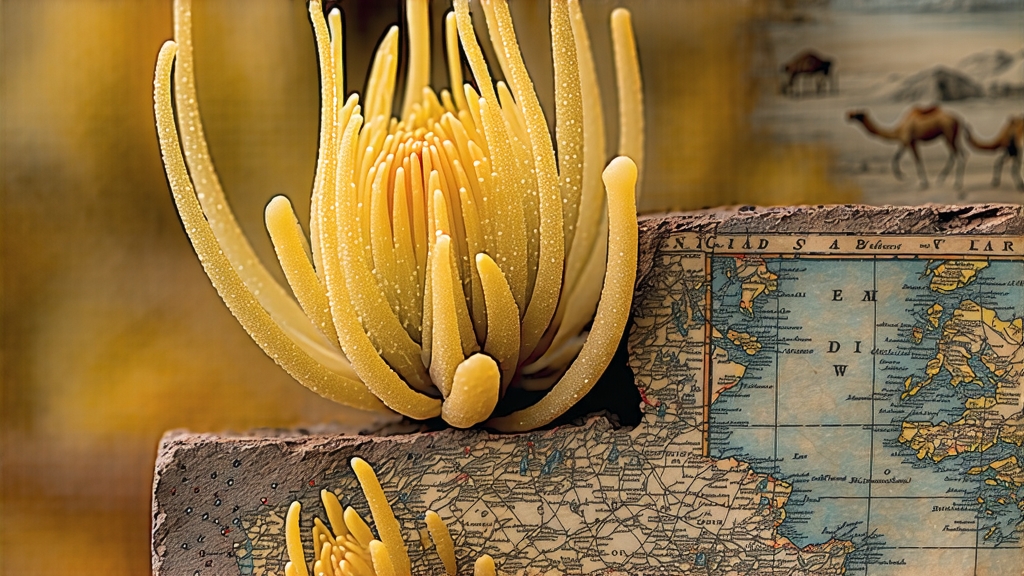
Fu Brick, known in Chinese as Fu Zhuan Cha, is the most aromatically complex member of China’s dark tea family. Unlike the better-known Pu-erh, Fu Brick was born on the ancient Silk Road, where tea, salt and horses were traded across deserts and plateaus. Caravans needed a tea that could survive months of scorching days and freezing nights without losing value; the answer came from the small city of Jingyang, Shaanxi province, where craftsmen discovered that a second, post-pressing fermentation inside the brick created tiny golden speckles—Eurotium cristatum—nicknamed “golden flowers.” These flowers not only lowered the bitterness of rough summer leaf but also imparted a mellow, honey-like sweetness that deepened year after year.
Historical records first mention “Jingyang dark brick” during the Ming Jiajing era (1522–1566), yet its story truly begins with the Song dynasty’s “tea-horse bureau,” a state monopoly that exchanged Chinese tea for Tibetan warhorses. To maximize load, tea was steamed, piled, pressed into bricks weighing exactly 2.5 kg, and wrapped in bamboo leaves. By the Qing dynasty, the court had granted Jingyang merchants an imperial warrant; bricks stamped with the Chinese character “Fu” (福, blessing) became currency as reliable as silver. Traders heading west loaded up at Xi’an’s Bell Tower, followed the Hexi Corridor, and within six months reached Kashgar, where Fu Brick was swapped for jade, saffron or thoroughbred Ferghana horses. The journey itself was part of the recipe: temperature swings and caravan humidity coaxed the mycelium into bloom, turning ordinary tea into liquid history.
Today, Fu Brick is protected under China’s National Geographic Indication, restricted to Jingyang and nine neighboring counties on the Guanzhong plain. The leaf material, however, is not local; it arrives from alpine gardens 600 km away in Yunnan, Hunan and Guizhou. Only large-leaf assamica harvested after the rainy season contains enough polyphenols and pectin to feed the microbes during the 29-day “flowering” phase. Upon arrival, the leaf is sorted into five grades: special, first, second, third and “horse-road,” the last reserved for compressed 5 kg blocks sold to Mongolian wholesalers.
Crafting Fu Brick is a calendar-driven ritual that begins on the solar term “Gu Yu,” when spring rains end. Step one is “soft firing”: leaves are pan-roasted at 280 °C for ninety seconds, just long enough to destroy leaf enzymes while preserving spore-friendly surface moisture. Next comes “pile-fermentation,” a 24-hour thermophilic phase reminiscent of composting; stacks 1.2 m high reach 65 °C, triggering Maillard reactions that turn amino acids into cocoa and malt aromatics. The pile is then broken, cooled, and sprayed with a mist of Jingyang’s hard well-water, whose mineral profile—rich in calcium, magnesium and bicarbonate—acts as a microbial activator.
The most iconic step is “flowering,” possible only within the county’s unique microclimate. Bricks are stacked inside underground cellars dug 3 m into loess plateau silt, where year-round humidity hovers at 75 % and temperature at 28 °C. Each brick is wrapped in handmade mulberry paper that breathes but keeps out contaminants. Over 29 days, Eurotium cristatum colonizes the interior, forming visible golden grains 0.3–0.5 mm across. Mycologists compare the process to the noble rot of Sauternes wine: the fungus consumes starch and simple sugars, leaving behind rare polyketides that lend a dried-apricot sweetness and a faint, lingering orchid note. Finally, bricks are dried for seven days in a ventilated loft where burning pine charcoal raises the ambient temperature to 45 °C, locking in fragrance while adding a whisper of smokiness reminiscent of distant campfires.
A well-aged Fu Brick is a tactile object of beauty: the surface is matte chestnut, imprinted with the retrograde characters “Fu” and eight-petal chrysanthemums symbolizing eternity. Snap the brick sideways and you reveal a constellation of gold against obsidian leaf; the sound should resemble breaking high-cacao chocolate—clean, brittle, reassuring. Aroma straight from the brick mingles old leather, dried persimmon and a trace of star anise, but the true